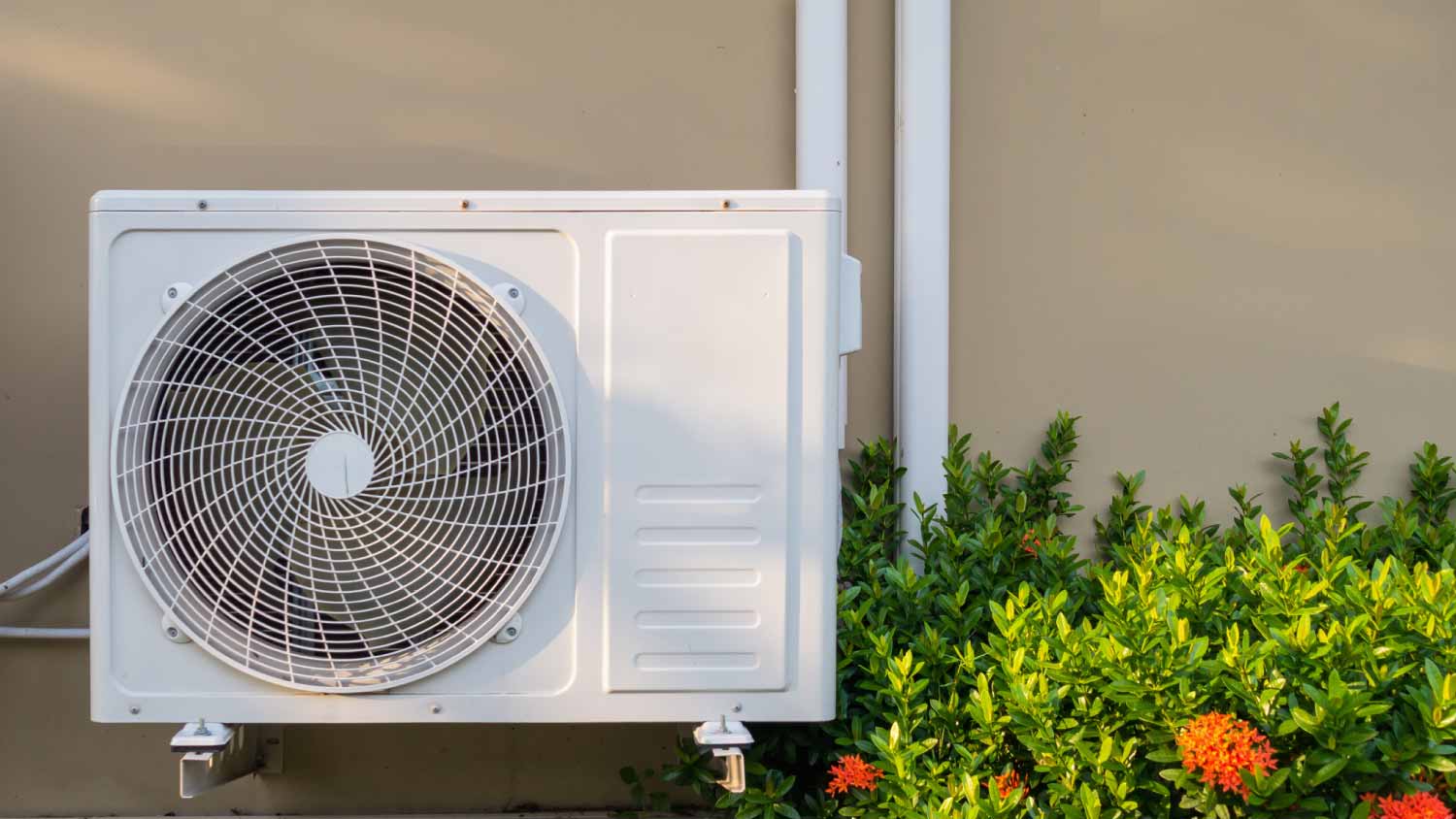
Moving a furnace a few feet is not a huge matter. However, moving a furnace to another room or different part of the house will probably cost a few thousand dollars. It's a major job involving numerous different professionals.
Keep it cozy with this handy heating system


The main components of a forced-air heating system are a furnace or heat pump and ductwork.
Forced-air systems offer a relatively efficient way to heat your home.
If you have existing ductwork, installing a forced-air system can be affordable.
These systems require occasional maintenance, like changing filters and checking the thermostat, as well as annual inspections.
If you’re looking for an easy-to-use, whole-home heating system, then forced-air heating is an obvious choice. So, what is forced-air heating? In short, it’s an efficient type of heating that lets you crank up the temperature in your house with the press of a button (or, even better, on an automatic schedule). Keep reading to learn more about forced-air heating systems, including how they work and how to maintain them.
Forced-air heating is a type of heating system that uses a heat source (often a furnace or heat pump) to warm up air and distribute it into your home through ductwork. A forced-air system might run on natural gas, electricity, or another fuel source, depending on the type of heating appliance you have. Overall, it’s a fairly efficient way to heat your home—especially if your forced-air system uses a heat pump (rather than a furnace).
Forced-air heating systems have several components that work together to circulate warm air through your home. These parts may include:
Furnace or heat pump
Heat exchanger
Blower fan
Ductwork
Thermostat
Exhaust pipe
Safety features
All forced-air heating systems work similarly, but there are slight differences depending on whether the system uses a heat pump or furnace. Here’s a basic overview of how a gas furnace works as part of a forced-air heating system:
The thermostat tells the furnace to begin the heating process.
The furnace performs its safety checks, gets rid of leftover gases, and ignites the heat source.
The heat exchanger warms the air, and the blower fan pushes the air into the ductwork.
Heated air leaves the ductwork through air vents and warms up your home.
The heating cycle ends, and the furnace shuts off when the thermostat signals that the indoor air has reached its desired temperature.

Like any home heating method, forced-air systems have their pros and cons. Here are the main benefits and drawbacks.
After installation, forced-air heating systems are reliable and easy to use.
They often use efficient heat sources (like heat pumps or electric furnaces).
Installing a forced-air heating system is cost-effective if you already have ductwork.
They provide quick heat distribution throughout your house.
Filters in forced-air systems can reduce dirt, debris, pet hair, allergens, and other contaminants in your home.
Install carbon monoxide alarms on every level of your home, in central locations, and outside bedrooms. Check all of your carbon monoxide detectors every month, and replace the batteries on a set schedule according to the manufacturer’s instructions.
Without existing ductwork, installing a forced-air system can be pricey and complex.
You’ll need to clean and maintain the system to keep it running smoothly.
You might also need to schedule duct cleaning to keep dust and mold out of your ductwork.
Some types produce carbon monoxide, which can be deadly if not properly vented outside.
Heating may be inconsistent, depending on the size and layout of your home and ductwork.
Wondering which type of furnace to install? According to Angi data, 58% of customers have a natural gas furnace and 77% want to add one to their home. Other popular furnace options include propane gas, electric, and oil.
Talk with your furnace installer about the best choice for your home.

If you have a forced-air heating system, it’s important to perform regular maintenance. This includes:
Changing the filters: In many cases, it’s fine to swap out your furnace filters once per quarter. But if you have pets, have allergies, smoke indoors, or use thin filters, you might prefer to replace them once per month or every other month.
Inspecting the furnace: On occasion, inspect your furnace and other system components to make sure everything looks normal. If you notice any problems with your furnace (like strange sounds or unusual smells), call a professional.
Checking the thermostat: Test and clean your thermostat from time to time and replace the batteries as needed.
Scheduling professional inspections: Hire a local HVAC company to inspect your system at least once per year—even if everything is working fine. Routine maintenance can identify issues early and extend the life of your HVAC system.
From average costs to expert advice, get all the answers you need to get your job done.

Moving a furnace a few feet is not a huge matter. However, moving a furnace to another room or different part of the house will probably cost a few thousand dollars. It's a major job involving numerous different professionals.

Faulty AC drip pans can lead to pesky leaks and improper home cooling. Find out how much AC drip pan replacement costs for your cooling system.

What you’ll pay in Columbus, OH, for furnace repairs depends on many factors. Here’s a breakdown of what can go wrong and the cost to fix those issues.

There are a few different types of refrigerant for AC systems, but some contain environmental hazards. Learn about the five main types of refrigerant.

With so many types of furnaces out there, how do you know which one is best for you? Explore our guide to the five main types and get your home warmed up.

Thinking about installing a heat pump in your home? Learn about the different types of heat pumps and the options you can choose from in this guide.